Animal disease control
Regulatory authorities aim to combat animal diseases mentioned in legislation. Municipal veterinarians conduct inspections for animal diseases at facilities where animals are kept in conjunction with other visits, or by designated sample-taking visits. In more serious cases the authorities will order restrictive measures to prevent the spread of a disease.
Mandatory and voluntary health control
Health control consists of regular visits to facilities where animals are kept, taking samples, and keeping record of performed procedures. Health control can be mandatory or voluntary depending on the kind of animal and the risks involved in keeping them.
Mandatory health control
Mandatory health control for monitoring salmonella is conducted in the following facilities:
- chicken and turkey farms and hatcheries
- pig farms producing new animals
- bovine farms that produce artificial insemination bulls
- bovine farms that sell raw milk directly to consumers
It is not necessary to monitor for salmonella in facilities where poultry and eggs are produced only for your own use, and from where they will not be transferred to a facility where salmonella monitoring is mandatory. Notice that salmonella monitoring is always mandatory if eggs are sold or otherwise passed on outside of your own household.
Voluntary health control
Voluntary health control covers BKD in fish, Maedi Visna in sheep, CAE in goats, and tuberculosis in cervidae (deer). If a facility wishes to participate in voluntary health control, they must send a notification to the Regional State Administrative Agencies (AVI), who will assign a health rating for the facility. The rating describes the likelihood of which the facility is free of said disease.
Find more information on the Finnish Food Authority website.
Livestock healthcare
Livestock healthcare upholds and promotes animal health and well-being, as well as improves food safety. A functional healthcare system enables the prevention and control of contagious diseases and livestock diseases on farms. The current national healthcare system and monitoring systems are Naseva (for bovine farms), and Sikava (for swine farms).
Livestock healthcare services are provided by municipal veterinarians and private livestock veterinarians.
Health control on aquaculture farms
Inspections and sample-taking on aquaculture farms are conducted according to health risks by the municipal veterinarian according to guidelines provided by the Regional State Administrative Agencies. The objective of the inspections is to observe the animals and search for symptoms of contagious diseases, as well as ensure that the facility is operating according to the law.
Find more information on the Finnish Food Authority website.
Other disease control
The Finnish Food Authority and the Regional State Administrative Agencies mandate that control samples are taken annually in order to survey the state of animal diseases in Finland. A few examples of what these control samples are used for are: testing for bird flu on farms and diseases in apiaries.
